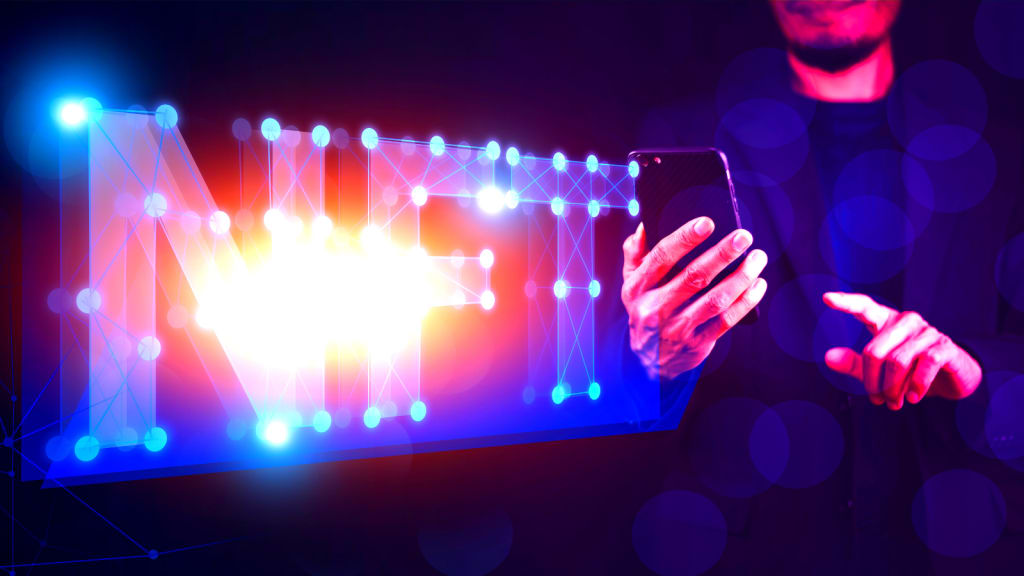NFTs: The New Way to Trade Digital Assets
1. What are NFTs? 2. How do NFTs work? 3. What are the benefits of NFTs? 4. What are the risks of NFTs? 5. How can I trade NFTs? 6. What are some examples of NFTs? 7. Conclusion

NFTs: The New Way to Trade Digital Assets
With the emergence of blockchain technology, a new form of digital asset has been created- the non-fungible token, or NFT. NFTs are unique, single-owner tokens that cannot be traded or exchanged for other tokens like regular cryptocurrency. This makes them ideal for digital art, collectibles, and other virtual items that can be authenticated and stored on the blockchain.
NFTs have already gained a lot of popularity in the online world, with platforms like OpenSea and Decentraland allowing users to buy, sell, or trade NFTs. The potential uses for NFTs are endless, and as blockchain technology continues to develop, we can only imagine what new and innovative ways they will be used in the future.
1. What are NFTs?
2. How do NFTs work?
3. What are the benefits of NFTs?
4. What are the risks of NFTs?
5. How can I trade NFTs?
6. What are some examples of NFTs?
7. Conclusion
1. What are NFTs?
NFTs, or non-fungible tokens, are a new type of digital asset that can be traded on the blockchain. Unlike traditional digital assets, NFTs are not interchangeable and each one is unique. This makes them more like physical assets, like art or collectibles, that can be traded on the open market.
NFTs are created by minting them on the blockchain. This process assigns a unique ID to the token and stores it on the blockchain. The token can then be traded on the open market like any other digital asset.
The benefits of using NFTs are that they are more secure and cannot be counterfeited. They also provide a way to fractionalize ownership of digital assets, which can make them more accessible to a wider range of investors.
The downside of NFTs is that they are subject to the same volatility as other digital assets. They also require a higher level of understanding to trade them effectively.
Overall, NFTs are a new way to trade digital assets that have unique benefits and drawbacks. If you are considering investing in NFTs, it is important to do your research and understand the risks involved.
2. How do NFTs work?
NFTs, or non-fungible tokens, are a new type of digital asset that allows for unique ownership of digital items. Unlike traditional assets like Bitcoin or Ethereum, which are each interchangeable with each other, NFTs are each unique and cannot be traded or exchanged for other NFTs.
So, how do NFTs work?
NFTs are created on blockchain platforms, which are decentralized networks that use cryptographic technologies to secure and track transactions. When an NFT is created, it is given a unique ID that is recorded on the blockchain. This ID is what allows NFTs to be tracked and traded.
NFTs can represent anything that can be digitized, including photos, videos, artwork, and even virtual worlds. Some platforms, like Ethereum, have launched marketplaces specifically for NFTs. These marketplaces allow buyers and sellers to trade NFTs using the platform’s native currency, ETH.
NFTs have a few key benefits over traditional assets. First, because they’re stored on a decentralized platform, they’re much more resistant to fraud and theft. Second, NFTs can be easily divided or fractionalized, which makes them more accessible to a wider range of investors. Finally, NFTs offer a level of provenance and transparency that other assets simply can’t match.
If you’re interested in buying or selling NFTs, there are a few things you need to know. First, you’ll need to create an account on a blockchain platform that supports NFTs, like Ethereum or TRON. Next, you’ll need to deposit some funds into your account. Finally, you can start buying and selling NFTs!
3. What are the benefits of NFTs?
NFTs, or non-fungible tokens, have been gaining in popularity as a way to trade digital assets. While there are many benefits to using NFTs, some of the most notable include:
-NFTs are unique and cannot be replicated, meaning that each one is like a digital fingerprint. This uniqueness allows for greater transparency and assurance that the asset is authentic.
-NFTs can represent a wide range of assets, including but not limited to digital art, video game items, and even real-world assets like property or tickets.
-NFTs are stored on a blockchain, which provides a level of security and immutability. This means that NFTs can be traded with confidence, knowing that the asset is not able to be altered or counterfeited.
-The use of NFTs can help to reduce fraud and scams, as well as increase trust between buyers and sellers.
Overall, NFTs offer a number of advantages and benefits that make them an enticing option for those looking to trade digital assets. With their unique properties and increased security, NFTs are poised to play a major role in the future of digital trading.
4. What are the risks of NFTs?
NFTs are a new way of trading digital assets, and as with any new technology, there are risks associated with their use. One of the risks is that NFTs may be susceptible to fraud. Because NFTs are not backed by a physical asset, it may be difficult to verify their authenticity, which could lead to people selling fake NFTs. Another risk is that NFTs may be hacked. If an NFT is stored on a blockchain, it is possible for someone to gain access to the underlying code and alter it. This could lead to the NFT becoming worthless or being used to represent a different asset.
There are also risks associated with the use of NFTs in general. For example, NFTs may be used to represent assets that are not easily traded in the real world, such as art or digital collectibles. This could lead to people overpaying for an NFT or being unable to sell an NFT when they want to. There is also the risk that the value of an NFT could drop sharply, as has happened with some cryptocurrencies. This could leave people who have invested in NFTs out of pocket.
Overall, there are risks associated with investing in and using NFTs. However, these risks should not deter people from using this new technology. With proper research and due diligence, people can mitigate the risks and enjoy the benefits of NFTs.
5. How can I trade NFTs?
In order to trade NFTs, you will need to find a marketplace that offers them. There are a few different options available, each with its own advantages and disadvantages.
One option is to use a traditional online marketplace such as eBay or Etsy. These platforms are familiar to many users and offer a wide variety of NFTs to choose from. However, they can be less secure than some of the other options and may charge higher fees.
Another option is to use a dedicated NFT marketplace such as OpenSea. These platforms are designed specifically for buying and selling NFTs and usually offer a more secure environment. However, they may have a smaller selection of NFTs to choose from.
Finally, you can also use a cryptocurrency exchange that offers NFTs. These platforms are designed for trading cryptocurrencies but also offer a limited selection of NFTs. They can be more secure than traditional marketplaces but may charge higher fees.
No matter which option you choose, make sure to do your research before buying or selling any NFTs. Check the reputation of the marketplace and the seller, and make sure you understand the fees involved.
6. What are some examples of NFTs?
NFTs are digital assets that are non-fungible and therefore cannot be traded for other digital assets. One example of an NFT is a digital artwork. Unlike a traditional digital image, which can be copied and redistributed an infinite number of times, a digital artwork is unique and can only be sold by the artist.
Another example of an NFT is a virtual world item. In a virtual world like Second Life, players can buy, sell, and trade virtual assets. These virtual assets could be anything from houses to clothes to video games. However, because each item is unique, they are all considered NFTs.
Finally, one of the most popular examples of an NFT is cryptocurrency. Cryptocurrencies like Bitcoin and Ethereum are traded on decentralized exchanges and can be used to purchase goods and services. However, because each cryptocurrency is unique and not interchangeable with another, they are all considered NFTs.
7. Conclusion
NFTs have changed the digital asset landscape by providing a new way to trade and manage these assets. By using blockchain technology, NFTs offer a secure and transparent way to trade digital assets, which has led to their increasing popularity in recent years. While there are still some challenges to be faced, such as scalability and regulatory issues, NFTs have the potential to become the new standard for digital asset trading.
Digital art, music, and other creative assets have long been traded online, but until recently there was no easy way to do so. Enter NFTs. NFTs are digital tokens that can be used to represent any type of asset, and they're stored on a blockchain. This means that they can be bought, sold, or traded like any other asset, and they're also easy to verify and track.
NFTs are still in their early stages, but they hold a lot of promise for the future of digital asset trading. With NFTs, there's no need to worry about copy protection or fraud. And because they're stored on a blockchain, NFTs can be traded 24/7. This makes them a convenient and safe way to trade digital assets.
About the Creator
Jennifer Defalco
An NFT, or non-fungible token, is a digital asset that represents ownership of a unique item or asset. NFTs are stored on a blockchain.






Comments
There are no comments for this story
Be the first to respond and start the conversation.